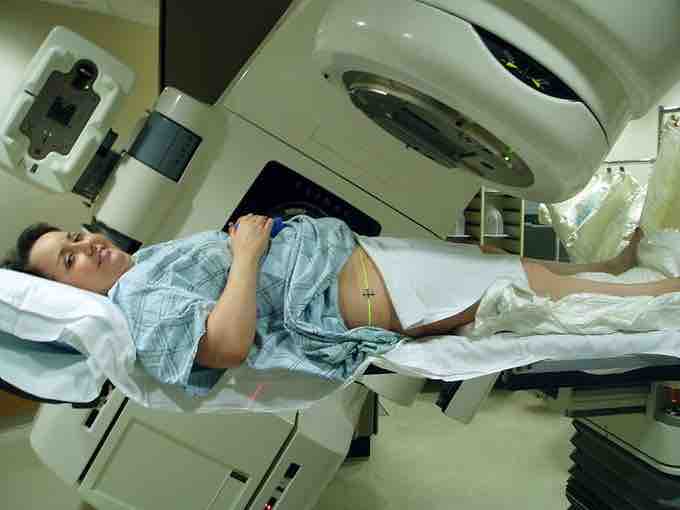Radiation therapy involves the application of ionizing radiation to treat conditions such as hyperthyroidism, thyroid cancer, and blood disorders. Radiation therapy is particularly effective as a treatment of a number of types of cancer if they are localized to one area of the body. It may also be used as part of curative therapy, to prevent tumor recurrence after surgery, or to remove a primary malignant tumor. Radiation therapy is synergistic with chemotherapy and has been used before, during, and after chemotherapy in susceptible cancers.
Ionizing radiation works by damaging the DNA of exposed tissue, leading to cellular death. When external beam therapy is used, shaped radiation beams are aimed from several angles of exposure to intersect at the tumor, providing a much larger absorbed dose there than in the surrounding, healthy tissue .

External Beam Therapy
Radiation therapy of the pelvis. Lasers and a mold under the legs are used for precise positioning
Brachytherapy is another form of radiation therapy, in which a therapeutic radioisotope is injected into the body to chemically localize to the tissue that requires destruction . A key feature of brachytherapy is that the irradiation affects only a very localized area around the radiation sources. Exposure to radiation of healthy tissues further away from the sources is therefore reduced in this technique.
Radiation therapy is in itself painless. Many low-dose palliative treatments (for example, radiation therapy targeting bony metastases) cause minimal or no side effects, although short-term pain flare-ups can be experienced in the days following treatment due to edemas compressing nerves in the treated area. Higher doses can cause varying side effects during treatment (acute), in the months or years following treatment (long-term), or after re-treatment (cumulative). The nature, severity, and longevity of side effects depend on the organs that receive the radiation, the treatment itself (type of radiation, dose, fractionation, concurrent chemotherapy), and the individual patient.